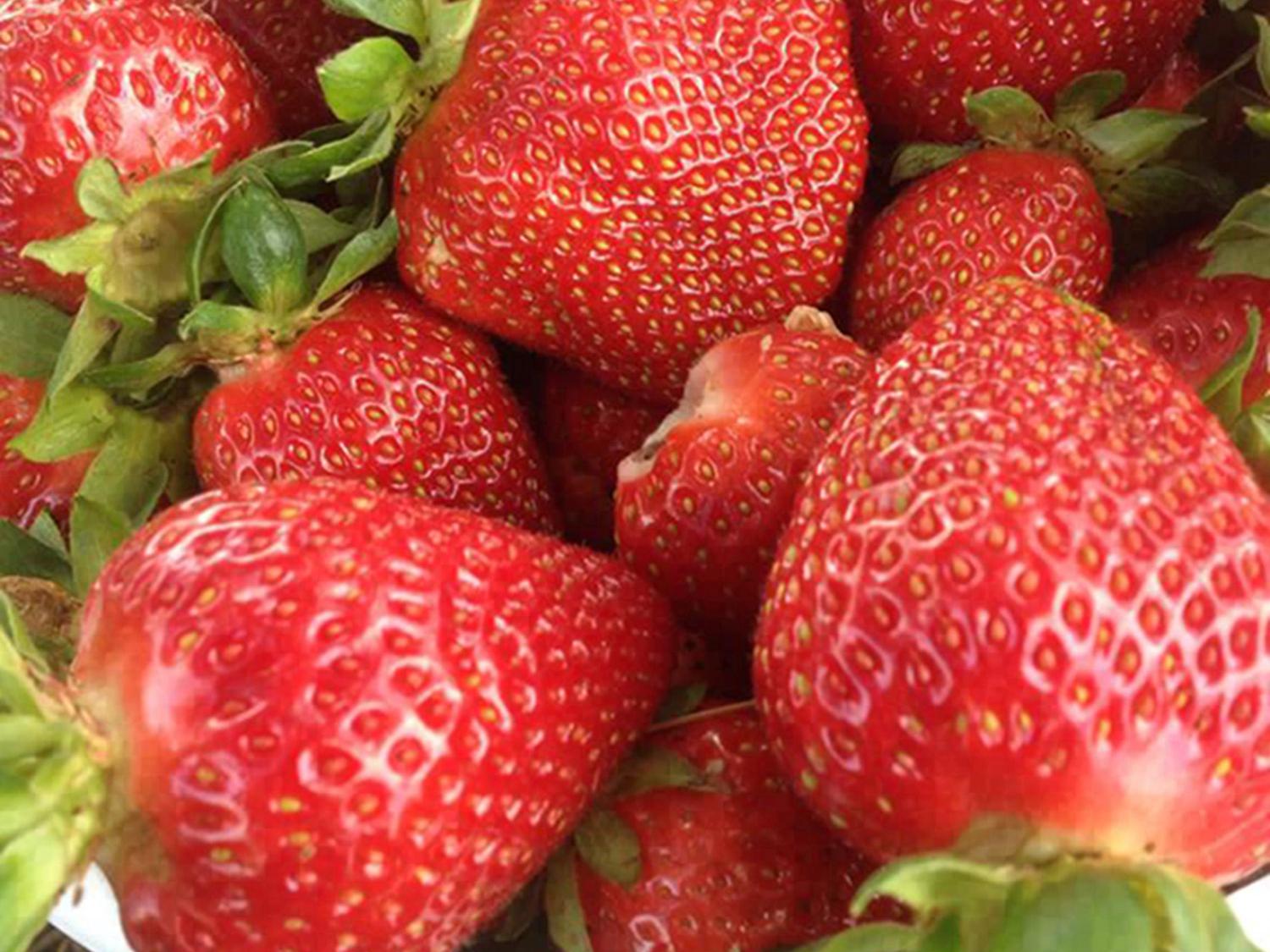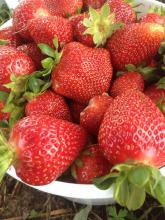Information Possibly Outdated
The information presented on this page was originally released on May 2, 2014. It may not be outdated, but please search our site for more current information. If you plan to quote or reference this information in a publication, please check with the Extension specialist or author before proceeding.
Local strawberries are finally in season
MISSISSIPPI STATE – Unseasonably cool temperatures in the wake of historic tornado activity could be a boon for the state’s strawberry growers.
“The weather over the past few days has been tough, but it’s still early in the strawberry season,” said Brooks Brownlee of Brownlee Farms in Red Banks, Mississippi. “This year has been the latest start we’ve ever had -- we just started picking on April 24. But the cool weather that delayed the crop may be a good thing and prolong our season.”
In spite of the harsh winter, delayed spring and volatile weather, Brownlee is optimistic about this season.
“Fungal issues have been relatively mild, we haven’t had a lot of pest issues, and we manage diseases ahead of the picking because most disease goes in through the bloom,” he said. “The temperatures may drop into the 40s for several nights, and that’s good strawberry weather. Everything seems to point to a good strawberry year.”
Brownlee grows the Chandler and Camarosa varieties of strawberries on 7 acres in Marshall County, which makes his farm the second-largest strawberry operation in the state. Only Eubanks Farms of Lucedale, which grows 60 acres of strawberries for the commercial market, is larger.
Eric Stafne, fruit specialist with the Mississippi State University Extension Service, said that at one time, south Mississippi produced enough strawberries to ship to other states, but over time that number has dwindled in spite of local demand.
He pointed to growing challenges as the reason many producers do not grow strawberries.
“Strawberries are the earliest fruit crop to ripen in the spring and so have a strong demand among consumers. Even so, there are few growers in the state,” Stafne said. “It is a labor intensive and expensive crop to grow. Strawberries are usually grown in an annual plasticulture system now, whereas in the past they were grown in a perennial matted row system.”
Stafne said the soft fruit is perishable, so growers need to have a market ready.
Brownlee sells his berries directly to consumers through an on-farm market and two off-farm locations. Because the soft fruit is so perishable, he does not have a u-pick operation.
“Vine-ripened strawberries are just better,” he said. “But fresh, vine-ripened strawberries have to be picked to maintain the quality everyone wants. We pick on a three-day rotation and keep the fields picked so the berries don’t spoil.”
When customers buy large amounts of berries, he encourages them to eat the fruit or process it quickly.
“Whatever you’re not going to eat in two days, go ahead and process,” he said. “Make jam, jelly, or ice cream topping, or freeze the berries for a future date. The trade-off for a really good strawberry is having a shorter amount of time to use it.”
Brownlee Farms also grows and sells warm-season vegetables during the summer and pumpkins in the fall. For more information, visit http://brownleefarms.com.
To help commercial growers learn to produce strawberries for local markets, the MSU Extension Service is hosting a free, one-time workshop May 13 and 14 in Choctaw.
“With proper education and experience, growers can make strawberries a profitable business,” Stafne said. “The short course will hopefully steer growers in the right direction for creating profitable enterprises.”
For more information, contact Rick Snyder at rick.snyder@msstate.edu or 601-892-3731, or Eric Stafne at estafne@ext.msstate.edu or 601-403-8939.




